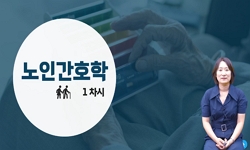This study is a descriptive study conducted to find out the predictive factors according to the level of the frailty of the communitydwelling older adult in a rural area. Data were collected from 400 older adults aged 65 years or older living in rural...
http://chineseinput.net/에서 pinyin(병음)방식으로 중국어를 변환할 수 있습니다.
변환된 중국어를 복사하여 사용하시면 됩니다.
- 中文 을 입력하시려면 zhongwen을 입력하시고 space를누르시면됩니다.
- 北京 을 입력하시려면 beijing을 입력하시고 space를 누르시면 됩니다.

일 지역 농촌 노인의 허약수준에 따른 관련요인 비교 = Comparison of Related Factors According to the Frailty Level of the Rural Community-Dwelling Older Adults
한글로보기https://www.riss.kr/link?id=A107495608
- 저자
- 발행기관
- 학술지명
- 권호사항
-
발행연도
2021
-
작성언어
Korean
-
주제어
Older adults ; Frailty ; Pre-frailty ; Frailty-related factors ; Rural community ; 노인 ; 허약 ; 전허약 ; 허약관련요인 ; 농촌지역
-
등재정보
KCI등재
-
자료형태
학술저널
- 발행기관 URL
-
수록면
295-308(14쪽)
-
KCI 피인용횟수
0
- 제공처
-
0
상세조회 -
0
다운로드
부가정보
다국어 초록 (Multilingual Abstract)
This study is a descriptive study conducted to find out the predictive factors according to the level of the frailty of the communitydwelling older adult in a rural area. Data were collected from 400 older adults aged 65 years or older living in rural areas of Gyeongsangnam-do from October 2019 to March 2020. Data were analyzed using logistic regression to examine the predictive factors according to the level of frailty. The results showed that 27.8% for robust older adults, 30.9% for pre-frailty older adults, and 41.3% for frailty older adults. As a result of analyzing the predictive factors according to the level of frailty, the predictors from the robust stage to the pre-frailty stage were grip strength, nutritional status, and depression. The predictive factors for entering the pre-frailty stage into the frailty stage were gender, nutritional status, physical performance ability, and depression. Also, it was found that the predictive factors for entering from the robust stage to the frailty stage were sex, occupation, nutritional status, physical performance ability, and depression. Through this study, it was possible to understand the level of the frailty of the older adults living in rural communities and the effects of multidimensional variables. These results can be used as basic data necessary to find a way to prevent and manage the progression of frailty among older adults in rural areas.
국문 초록 (Abstract)
본 연구는 일 지역 농촌 노인의 허약수준에 따른 관련요인을 알아보기 위하여 시행된 서술적 조사연구이다. 2019년 10월부터 2020년 3월까지 경상남도 H군에 거주하는 65세 이상 노인 400명으로...
본 연구는 일 지역 농촌 노인의 허약수준에 따른 관련요인을 알아보기 위하여 시행된 서술적 조사연구이다. 2019년 10월부터 2020년 3월까지 경상남도 H군에 거주하는 65세 이상 노인 400명으로부터 자료를 수집했다. 노인의 허약수준과 그에 따른 예측요인을 살펴보기 위해 이분형 로지스틱 회귀분석을 이용하여 자료를 분석한 결과, 건강노인은 27.8%, 전허약 노인은 30.9%, 허약노인은 41.3%로 나타났다. 허약 수준에 따른 예측요인을 분석한 결과, 건강 단계에서 전허약 단계로 진입하는 예측요인은 악력, 영양상태, 우울이었고 전허약 단계에서 허약 단계로 진입하는 예측요인은 성별, 영양상태, 신체기능, 우울이었으며 건강 단계에서 허약 단계로 진입하는 예측요인은 성별, 직업, 영양상태, 신체기능, 우울로 밝혀졌다. 본 연구를 통하여 농촌지역 거주노인의 허약수준과, 이에 따른 다차원적 변수들의 영향을 파악할 수 있었다. 이러한 결과는 농촌지역 노인들의 허약진행을 예방하고 관리하기 위한 방안을 모색하는데 필요한 기초자료로 활용될 수 있을 것이다.
참고문헌 (Reference)
1 김창오, "허약노인의 개념적 정의와 조작화에 대한 국내외 연구현황" 1 (1): 85-93, 2010
2 김창오, "허약노인을 위한 방문재활 프로그램의 장애발생예방 효과에 대한 연구" 한국노년학회 30 (30): 1293-1309, 2010
3 정휘수, "한국형 노쇠측정도구로 평가된 노쇠와 관련된 임상적 요인들" 대한노인병학회 17 (17): 71-78, 2013
4 황환식, "한국형 노쇠측정도구 개발 및 타당도 조사" 대한노인병학회 14 (14): 191-202, 2010
5 기백석, "한국판 노인 우울 척도 단축형의 표준화 예비연구" 35 : 298-307, 1996
6 박진경, "취약계층 노인의 허약 영향 요인" 한국노년학회 34 (34): 441-456, 2014
7 도현경, "초고령 노인의 신체기능장애와 재활 전략" 대한노인병학회 19 (19): 61-70, 2015
8 김효영, "지역사회 허약노인과 비허약노인의 신체기능과 자아통합감" 한국노인간호학회 16 (16): 27-37, 2014
9 이세윤, "지역사회 거주 노인의 연령군에 따른 허약수준 관련 요인: 다면적 접근" 한국보건교육건강증진학회 35 (35): 89-101, 2018
10 장혜경, "재가노인의 노쇠, 영양상태, 긍정적 사고 및 가족기능이 건강보존에 미치는 영향" 한국성인간호학회 27 (27): 52-62, 2015
1 김창오, "허약노인의 개념적 정의와 조작화에 대한 국내외 연구현황" 1 (1): 85-93, 2010
2 김창오, "허약노인을 위한 방문재활 프로그램의 장애발생예방 효과에 대한 연구" 한국노년학회 30 (30): 1293-1309, 2010
3 정휘수, "한국형 노쇠측정도구로 평가된 노쇠와 관련된 임상적 요인들" 대한노인병학회 17 (17): 71-78, 2013
4 황환식, "한국형 노쇠측정도구 개발 및 타당도 조사" 대한노인병학회 14 (14): 191-202, 2010
5 기백석, "한국판 노인 우울 척도 단축형의 표준화 예비연구" 35 : 298-307, 1996
6 박진경, "취약계층 노인의 허약 영향 요인" 한국노년학회 34 (34): 441-456, 2014
7 도현경, "초고령 노인의 신체기능장애와 재활 전략" 대한노인병학회 19 (19): 61-70, 2015
8 김효영, "지역사회 허약노인과 비허약노인의 신체기능과 자아통합감" 한국노인간호학회 16 (16): 27-37, 2014
9 이세윤, "지역사회 거주 노인의 연령군에 따른 허약수준 관련 요인: 다면적 접근" 한국보건교육건강증진학회 35 (35): 89-101, 2018
10 장혜경, "재가노인의 노쇠, 영양상태, 긍정적 사고 및 가족기능이 건강보존에 미치는 영향" 한국성인간호학회 27 (27): 52-62, 2015
11 마승현, "일부 지역사회 거주 노인들의 노쇠수준과 기능장애의 연관성 및 노쇠 관련요인" 대한가정의학회 30 (30): 588-597, 2009
12 김민경, "일부 보건진료소에서 실시한 건강증진프로그램이 농촌여성노인의 노쇠에 미치는 효과" 한국농촌의학.지역보건학회 44 (44): 115-123, 2019
13 이유진, "의료시설 접근성과 대중교통 접근성이 농촌 및 도시 지역 거주 노인의 주관적 건강상태에 미치는 영향 분석 - 일반화된 순서형 로짓 모형의 적용 -" 한국지역개발학회 27 (27): 65-88, 2015
14 조성은, "연령집단에 따른 노인의 허약(Frailty) 예측요인 분석" 한국보건사회연구원 37 (37): 139-169, 2017
15 진영윤, "여성노인의 허약 상태 예측을 위한 보행변동성 및 체력의 역할 검증" 한국체육학회 57 (57): 263-272, 2018
16 주정민, "농촌지역에 거주하는 다빈도의료이용자의 복합만성질환 경험 특성" 55 (55): 41-53, 2018
17 전경숙, "농촌지역 노인의 허약수준 및 사회적 요인" 대한노인병학회 18 (18): 143-152, 2014
18 조미형, "농촌노인의 건강관리실태와 정책과제" 한국농촌경제연구원 1-154, 2013
19 전경숙, "노인의 사회 관계망 및 사회적 지지와 허약의 관계" 대한노인병학회 16 (16): 84-94, 2012
20 박은자, "노인의 복합만성질환과 병의원이용・약물복용정보 문해력의 관련성 분석: 대도시와 중소도시・농어촌지역의 비교" 한국보건사회연구원 40 (40): 222-243, 2020
21 권용철, "노인용 한국판 mini-mental state examination(MMSE-K)의 표준화 연구" 28 : 508-513, 1989
22 국가법령정보센터, "노인복지법"
23 김영선, "노년기 허약 유형과 영향요인에 관한 연구" 한국노년학회 38 (38): 963-979, 2018
24 통계청, "고령인구비율(시도/시/군/구)"
25 Folstein, M. F., "“Mini-mental state”: a practical method for grading the cognitive state of patients for the clinician" 12 (12): 189-198, 1975
26 Fried, L. P., "Untangling the concepts of disability, frailty, and comorbidity: implications for improved targeting and care" 59 (59): M255-M263, 2004
27 Zheng, Z., "Prevalence and incidence of frailty in community-dwelling older people : Beijing Longitudinal Study of Aging II" 64 (64): 1281-1286, 2016
28 Sezgin, D., "Pre-frailty as a multi-dimensional construct : A systematic review of definitions in the scientific literature" 41 (41): 139-146, 2020
29 Reese, P. P., "Physical performance and frailty in chronic kidney disease" 38 (38): 307-315, 2013
30 Tanaka, T., "Oral frailty as a risk factor for physical frailty and mortality in community-dwelling elderly" 73 : 1661-1667, 2018
31 Pérez-Ros, P., "Nutritional status and risk factors for frailty in community-dwelling older people : A cross-sectional study" 12 (12): 1041-, 2020
32 Guigoz, Y., "Mini nutritional assessment : a practical assessment tool for grading the nutritional state of elderly patients" 4 (4): 15-59, 1994
33 이금숙, "Mini Nutritional Assessment(MNA)를 이용한 노인위암 수술 환자의 입원시 영양상태와 수술 후회복관련요인" 85-86, 2004
34 통계청, "KOSIS 100대 지표"
35 Saum, K. U., "Is polypharmacy associated with frailty in older people? Results from the ESTHER cohort study" 65 (65): e27-e32, 2017
36 Gitlin, L. N., "Introducing a new intervention : An overview of research phases and common challenges" 67 (67): 177-184, 2013
37 Mello, A. D. C., "Health-related and socio-demographic factors associated with frailty in the elderly : a systematic literature review" 30 : 1143-1168, 2014
38 Sheikh, J. I., "Geriatric Depression Scale (GDS): recent evidence and development of a shorter version" 5 (5): 165-173, 1986
39 Fried, L. P., "Frailty in older adults: evidence for a phenotype" 56 (56): M146-M157, 2001
40 Hanlon, P., "Frailty and pre-frailty in middle-aged and older adults and its association with multimorbidity and mortality: a prospective analysis of 493 737 UK Biobank participants" 3 (3): e323-e332, 2018
41 Walker, S. R., "Frailty and physical function in chronic kidney disease : the CanFIT study" 2 (2): 32-, 2015
42 García-Esquinas, E., "Consumption of fruit and vegetables and risk of frailty: a dose-response analysis of 3 prospective cohorts of communitydwelling older adults" 104 (104): 132-142, 2016
43 Cronbach, L. J., "Coefficient alpha and the internal structure of tests" 16 (16): 297-334, 1951
44 Buckinx, F., "Burden of frailty in the elderly population : perspectives for a public health challenge" 73 : 19-, 2015
45 Hsieh, F. Y., "A simple method of sample size calculation for linear and logistic regression" 17 (17): 1623-1634, 1998
46 Guralnik, J. M., "A short physical performance battery assessing lower extremity function : association with self-reported disability and prediction of mortality and nursing home admission" 49 (49): 85-94, 1994
47 김경희, "70세 이상 지역사회 거주노인의 허약 영향 요인" 한국산학기술학회 18 (18): 313-323, 2017
48 통계청, "2020년 고령자 통계"
49 통계청, "2019년 인구주택총조사 등록센서스 방식 집계결과"
50 통계청, "2019년 농립어업조사결과 보도자료"
51 통계청, "2019년 고령자 통계"
52 김우경, "2014년과 2017년 노인실태조사의 frailty(쇠약)과 frailty 측정척도 적용" 한국코칭능력개발원 21 (21): 101-110, 2019
동일학술지(권/호) 다른 논문
-
건강정보검증에 대한 노인과 비노인 집단 비교: 디지털리터러시와 건강임파워먼트를 중심으로
- 한국노년학회
- 안순태
- 2021
- KCI등재
-
- 한국노년학회
- 이현주
- 2021
- KCI등재
-
온라인 뉴스 빅데이터를 통한 코로나 19 담론과 사회복지 개입방안: 독거노인을 중심으로
- 한국노년학회
- 여지영
- 2021
- KCI등재
-
- 한국노년학회
- 정찬우
- 2021
- KCI등재
분석정보
인용정보 인용지수 설명보기
학술지 이력
| 연월일 | 이력구분 | 이력상세 | 등재구분 |
|---|---|---|---|
| 2026 | 평가예정 | 재인증평가 신청대상 (재인증) | |
| 2020-01-01 | 평가 | 등재학술지 유지 (재인증) |  |
| 2017-01-01 | 평가 | 등재학술지 유지 (계속평가) |  |
| 2013-01-01 | 평가 | 등재학술지 유지 (등재유지) |  |
| 2010-01-01 | 평가 | 등재학술지 유지 (등재유지) |  |
| 2008-01-01 | 평가 | 등재학술지 유지 (등재유지) |  |
| 2006-01-01 | 평가 | 등재학술지 유지 (등재유지) |  |
| 2003-01-01 | 평가 | 등재학술지 선정 (등재후보2차) |  |
| 2002-01-01 | 평가 | 등재후보 1차 PASS (등재후보1차) |  |
| 2000-07-01 | 평가 | 등재후보학술지 선정 (신규평가) |  |
학술지 인용정보
| 기준연도 | WOS-KCI 통합IF(2년) | KCIF(2년) | KCIF(3년) |
|---|---|---|---|
| 2016 | 1.34 | 1.34 | 1.72 |
| KCIF(4년) | KCIF(5년) | 중심성지수(3년) | 즉시성지수 |
| 1.84 | 2.08 | 2.242 | 0.19 |




 DBpia
DBpia






